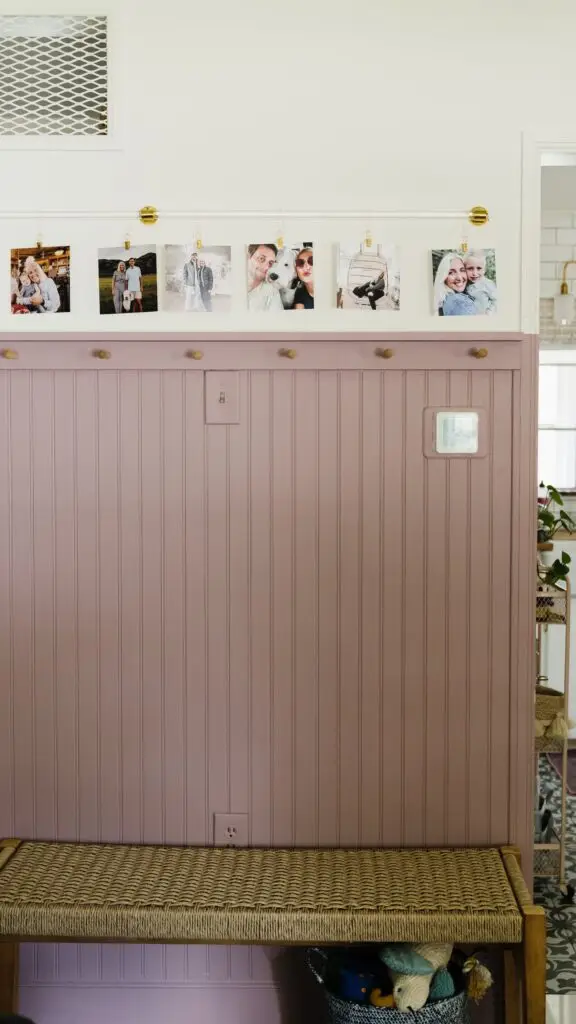My husband and I started renovating our small bungalow almost 5 years ago. We weren’t really sure at the time what tools we would need to start DIY projects. We started out with a drill and a reciprocating saw and slowly collected over the years. If I could go back and do anything differently as a person who has done serval DIY projects, I would have upped my tool game from the very beginning.

The Best DIY Power Tools for Beginners
- (1) Drill combo ($139 – comes with drill driver, impact drill, 2 batteries, charger, and bag)
- (2) Jig Saw ($99 – tool only)
- (3) Brad Nailer ($179 – tool only)
- (4) Ridgid Circular Saw ($159)
- (5) Multi-Tool ($78)
- (6) Table Saw with Folding Stand ($369)
- (7) Miter Saw ($199)
- (8) Angle Grinder ($169)
- (9) Palm Sander ($59)
- (10) Orbital Reciprocating Saw ($129)
Over the past five years, we have purchased a bunch of different power tools. If I would’ve known all of the tools we would have eventually purchased, I would’ve invested in them upfront! In doing so, we would have saved money in the long term. We made a lot of mistakes by not having the right equipment. (Here are a few projects we’ve done using the tools above!)

This purple beadboard project was so fun and quick! We got it done in about 1.5 hours start to finish. We used a miter saw, jigsaw, brad nailer, and drill.
Having all the right equipment and tools makes a world of difference in a successful DIY project. I’m not saying you can’t get by without… But you will save yourself a lot of time, money, and stress!

This laundry room makeover turned out better than I could have imagined! We used ALOT of power tools on this project including… miter saw, jigsaw, table saw, drill, multi-tool, sander, paint sprayer (listed below in the bonus tools), brad nailer.
5 Power Tools Used in Construction
Looking back, it actually makes so much more sense to invest in a bunch of tools upfront even if you aren’t sure you’re going to use them… Because the truth is you will use ALL OF them. And you’ll be so happy you have them on hand when you’re in the middle of a project, watching a YouTube video realizing you don’t have the right tool.

This DIY Picture Ledge is one of the easiest and cutest projects we’ve done. It was pretty easy and we used… drill, mitersaw, brad nailer and sander.
Some of our DIY projects would have gone smoother if we had invested in more DIY tools when we first started. So trust me and the first list below is every tool I recommend you add to your collection ASAP.
Projects and DIY PowerTools
I will also break down some of the different DIY tools (in very basic words) and what they are used for in projects.
Miter Saw – This tool makes straight cuts. It’s best for boards or trim. You can also cut angled ends with this tool.
Drill – This tool it used for screwing screws into wood or drills hole. You would use a drill to hang a picture or connect two pieces of wood.
Jigsaw – This tool is a saw which uses a reciprocating blade to cut irregular curves, such as stenciled designs, in wood, metal, or other materials.
Brad Nailer – This tool is a light-duty tool. It might be used for adding narrow decorative moldings to plain panels or under stair treads. Great for attaching baseboard or wall paneling.
Multi-Tool – A multitool or oscillating tool is a powerful tool that oscillates (rather than rotating or reciprocating). This tool is great for cutting out pieces or moulding or baseboards.
Circular Saw – A circular saw is a power-saw using a toothed or abrasive disc or blade to cut different materials using a rotary motion spinning around an arbor. Similar to a table saw but it is hand held. You can make long cuts.
Table Saw – A table saw is a woodworking tool, consisting of a circular saw blade, mounted on a table, that is driven by an electric motor. You use this tool to make long straight cuts.
Sander – A sander is a power tool used to smooth surfaces by abrasion with sandpaper. Sanders have the means to attach the sandpaper and a mechanism to move it rapidly. You would use this to remove paints, stains, or smooth any surface.
Angle Grinder – An angle grinder, also known as a side grinder or disc grinder, is a handheld power tool used for grinding and polishing. You would use this to cut soft metals like pipes or concrete.
Reciprocating Saw – A reciprocating saw is a type of machine-powered saw in which the cutting action is achieved through a push-and-pull motion of the blade. The original trade name Sawzall is often used in the United States. You would use this tool to make less precise cuts. It is mostly similar to a jigsaw.
Bonus Tools
Here are a couple of bonus tools you don’t necessarily need, but are extremely helpful!
- Graco Paint Sprayer ($298)
- Framing Nailer – cordless ($339)
- Compact Router ($139)
- Planer ($499)
- Shop Vac ($99)
What Should Be in a DIY Tool Box?
If you have a toolbox, do you want to have a good set of tools, such as screwdrivers and pliers.
- Hammer ($23)
- Screwdriver Set ($33)
- Crescent Wrench Set ($25)
- Hex Key Set ($16)
- Pliers Set ($27)
- Electrical Wire Strippers ($16)
- Measuring Tape ($35)
- 4-Foot Level ($20)
- Pipe wrench ($15)
- Multi Use Tubing Tool ($13)
- 18 inch Wrecking Tool ($23)
- Clutch Clamp Set ($30)
- Utility Folding Knife ($25)
- Combination Wrench Set ($90)